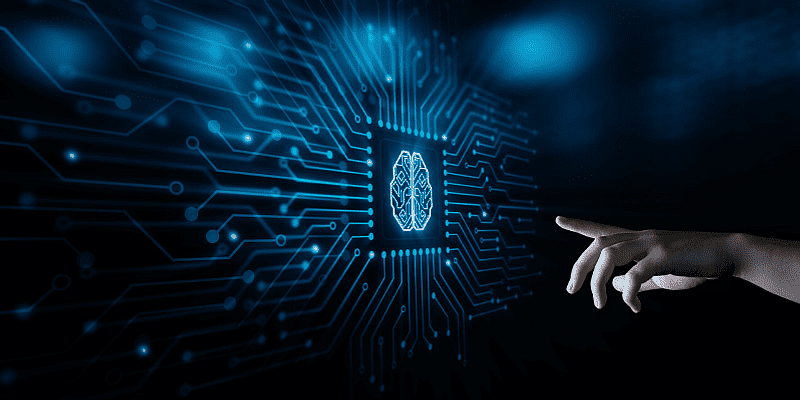Artificial intelligence (AI) will add approximately 15 trillion to the global economy by 2030 and around 97 million people will be employed in the AI industry by 2025. Given its explosive impact, one can say with certainty that the AI revolution is upon us. It has crossed over from a scientific niche to a technology that is the driving force behind most devices that we use daily. While AI-powered smartphones and devices are impressive, it is a fact that we’re just beginning to explore AI’s true power.
An AI system mimics or simulates human-like intelligence. Typically, this requires three human cognitive abilities of learning, problem-solving, and decision-making. There are different ways an AI system can be implemented. One approach would be to use machine learning—where large amounts of data are fed to a computer system and using statistical techniques it allows systems to learn and improve over time.
Eventually, the system would reach a stage where it would able to identify patterns and relationships in the data and uses this to make predictions or decisions.
Another approach is through expert systems where human expert-like decision-making is mimicked using a combination of rules and machine learning. One of the most prominent approaches is with neural networks which are modeled like the structures and functions of a human brain.
In general, AI models process vast amounts of data, find patterns, and use them to make predictions. For instance, to carry out automated tasks like photo ID verification, an AI model trained on a large number of facial images with associated features is used to examine pixels in an image or video and match it with a face to complete the validation process. Something that even humans do by putting in a conscious effort in most cases. Similarly, to teach AI-based multifunctional cognitive agents to communicate like humans, they are fed a large amount of text and dialogues.
There exists two forms of AI—Artificial General Intelligence and Specialised Artificial Narrow Intelligence
Artificial General Intelligence (AGI) is a type of AI that is capable of learning or understanding any intellectual task that a human being can. It is able to solve a range of complex problems in various environments. AGI is not trained to carry out a specific task, but it is able to learn new skills and knowledge on its own just like a human without explicit programming.
Artificial Narrow Intelligence (ANI), on the other hand, is a highly specialized form of AI. It is designed to perform a specific task or a set of tasks in a given environment. ANI, unlike AGI is incapable of adapting to a new task on its own without explicit programming or training.
Our lives are sprinkled with narrow AI from basic internet searches and product and content recommendations, to voice assistants like Alexa or Siri. Narrow AI can only accomplish what it’s trained to do. It makes decisions based on the data and objectives it is already trained on and does not have the ability to automatically learn new skills.
On the other hand, AGI can do everything that narrow AI is not capable of doing. One way to look at it would be to think of narrow AI as the foundation on which AGI is being built. It enables machines to apply human-like reasoning to accomplish various tasks.
We are, however, far away from developing the full extent of AGI. The human brain’s biological structure, the workings of various neural pathways, episodic and semantic memory, are very complex and a lot of our intelligence is derived from the physical embodiment and the interactions with our environment, to say the least. However, when AI, NLP, and deep learning are combined, they can get closer to replicating human intelligence than ever before. For instance, using these technologies, machines can be made to acquire cognitive abilities that enable them to a number of things like learn from experience—gain the ability to learn and integrate what they have learned from their transactions and interactions into new circumstances.
It can also plan like humans. Just like how we draw from life experiences to chalk out plans for our future. Similarly, AI-powered machines can learn from past experiences to create planned outcomes.
Along the same lines, even if a situation is outside the parameters of what it was taught, AGI can still analyze information and decide on a course of action.
If combined with with voice recognition, AGI can understand the wants, feelings, beliefs, and mental processes of human beings. With this kind of AI, machines are actually able to comprehend human behavior.
Between Narrow AI vs. General AI, which one is more unobtrusive?
Narrow AI is typically thought to be less obtrusive than general AI because it’s made to handle specific tasks and is incapable of adapting or learning beyond those tasks. Since it’s less inclined to generate unexpected or undesired results, narrow AI is falsely perceived as less of a potential disruptor compared to AGI.
In reality, this can be different. Narrow AI is a huge disruptor as it leads to a lot of unintended consequences and because of the unobtrusive nature, it goes undetected before it is too late.
Take the example of a narrow AI that is engaging users with content. Since one of the training objectives of the AI is to engage users and keep them hooked on to the content , Since anything that is outrageous could get more user traction – a user starts seeing content that is tailored to their fears and biases. Humans have a confirmation bias where they are more likely to agree with and consume things that provide some level of cognitive coherence. This unintended consequence polarizes societies and invalidates quite a lot of the humane attributes.
General AI, on the other hand, is intended to be flexible and adaptable and can learn about and adapt to diverse circumstances and contexts. As a result, general AI has the potential to be visibly more disruptive and is capable of taking actions and producing results based on its own learning and cognitive capabilities – making its application more noticeable than narrow AI.
Safeguards for the AGI to prevent it from becoming a rogue AI working against humans like in the movies – is a hot topic in the sphere of AI and is something to be seen in the future to come. But in the short-term, narrow AI manipulating our human biases and emotions is definitely a disruptor as we are seeing around the world today.
The unobtrusiveness of an AI system ultimately depends on its design and execution, even if narrow AI is typically thought to be more so than general AI. A specific AI system that is intended to be accountable and transparent might be viewed as less obtrusive than a general AI system that is intended to be impenetrable and opaque. Explainable and ethical AI along with good regulatory frameworks should help in safeguarding the implications of narrow AI.



![Read more about the article [Funding roundup] Selligion Technologies raises Rs 3 Cr, FastJobs.io secures undisclosed sum](https://blog.digitalsevaa.com/wp-content/uploads/2022/11/paytm1-1668412647584-300x150.png)




![Read more about the article [Techie Tuesday] How automation-powered predictions are transforming onboarding and the future of work](https://blog.digitalsevaa.com/wp-content/uploads/2021/11/feature-71-1637562298216-300x150.png)

